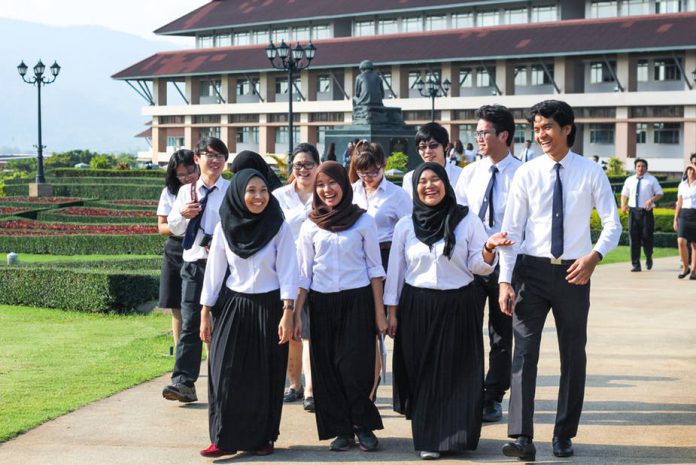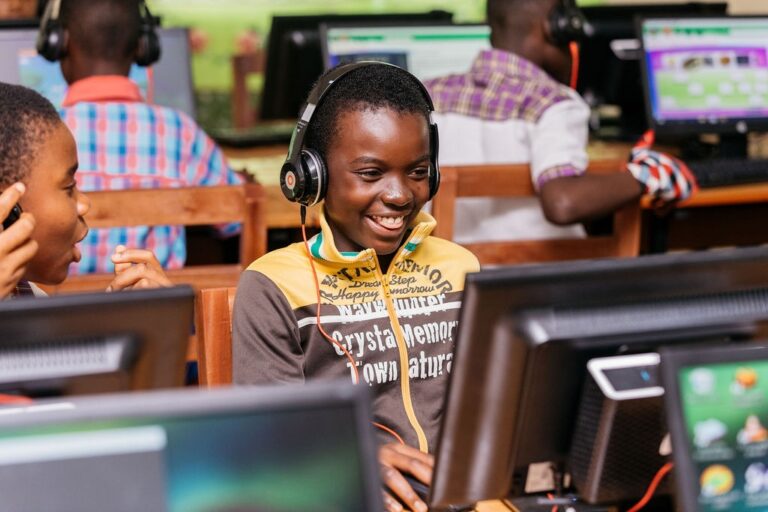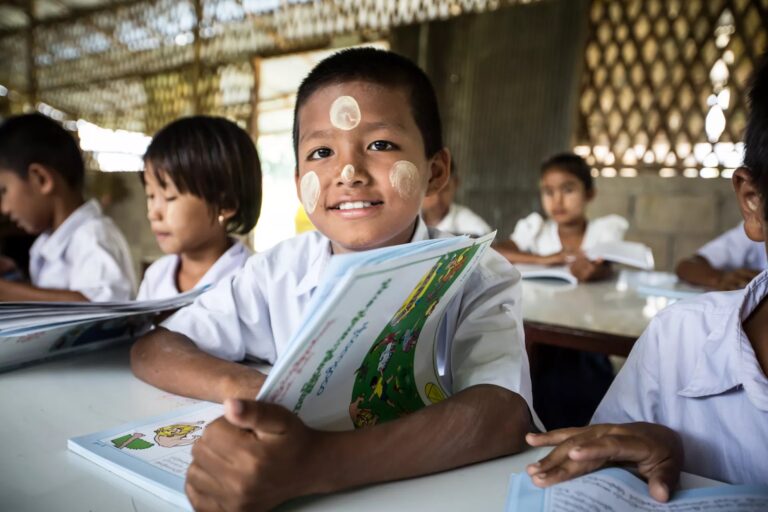20 January, 2018
As the celebration for last year’s 50th anniversary of the Association of Southeast Asian Nations (ASEAN) wanes, ASEAN now face the tasks to realise the ambitious vision of an integrated socio-cultural, economic and political community. Education is one of the sectors identified as having a pivotal role in this community building process.
ASEAN plans to enhance the quality of human resources in the region and forming a regional identity, while contributing to economic growth.
Among the various action plans set out at the 14th ASEAN Summit in Cha-Am Hua-in in 2009, regionalisation of higher education profiles was high on the agenda.
ASEAN has carried out initiatives to foster cooperation among education institutes in the region. ASEAN also plans to encourage joint research projects and foster student (and staff) exchange through common credit transfer systems and other enabling mechanisms.
ASEAN is also working to create a “Common Space for Higher Education”. Having a common space for higher education in the region involves harmonising an estimated 6,500 education institutes among ASEAN countries and catering to about 12 million students. Challenges in doing so are many and complex, as discussed last November at a panel organised on this topic by SEA Junction and the Heinrich Boell Foundation Southeast Asia.
For a start, students in the region when considering studying abroad generally follow the established pattern of opting for institutes outside of Southeast Asia.
In the past, ASEAN students usually opt for universities in the US, Europe and Australia and a lesser extent Japan. Now they also consider universities in India and China are being. Non-Southeast Asian universities are eager to see such preference maintained. Their student recruitment marketing is widespread and expanding.
Data from the latest Thai government’s International Education Expo 2017 held in November 2017 in Bangkok show that the UK, US and Australia are the favourite destinations for studying abroad for visitors’ (mostly Thai) Among the top 20 destinations, there were only two ASEAN member countries, Singapore in 9th place and Malaysia in the 20th.
In terms of representation of recruiting institutes, the UK and the US had by far the greatest number, followed by China as an aspiring educational centre.
Competition among educational institutes in Southeast Asia is further exacerbated by the increasing number of incoming international universities from outside the region, such as from the US and Australia.
These universities, aiming to capture an attractive and expanding market, establish a “glocal” (global and at the same time local) presence in Southeast Asia. They open “off-shore” campus such as the Yale-NUS College in Singapore just to name one.
They also open academic programs such as double degree programs and pathway programs. They allow the students to study in their home countries for one to two years, then complete their academic degree in Australia, UK, and so forth.
At present, these educational options are mainly based in Malaysia and Singapore, further strengthening the position of these two countries as educational hubs in the ASEAN landscape. But more and more they are being developed in other parts of the region.
The “glocalization” of education also extends to virtual education. The availability and accessibility of digital platforms have redefined education in the region. It provides youth with unprecedented access to world education and universities without having to leave their home country or region.
Current generations of students are aware that their learning is beyond the typical classroom and they appreciate it. It is amply demonstrated by their use of online learning platform such as the Massive Open Online Course (MOOC), Khan Academy, edX, and Coursera.
Moreover, their entrepreneurial and creative mindset expects an educational (and work) ecosystem that gives them autonomy while supporting them in their exploration of future opportunities of business or career.
Traditional courses and approaches may no longer be adequate. Educational institutes in the region are finding out that they have to quickly adapt to respond to changing students’ demands if they are to recruit and keep them.
The shift in students’ interest towards new subjects has been observed for instance from “Marketing” to “Digital Marketing”, from “Social Development” to “Social Entrepreneurship” and from “Computer Science” to “Application Development”.
Thailand’s case
It is in this rapidly changing context that Southeast Asian countries have to propose themselves as worthy educational options for new generations of students.
These new students are focused on realising their aspirations and preoccupied with finding jobs in increasingly competitive settings. In their choices, students seem to value not only the degree certificate but also the whole experience of studying in another country.
One example, the Thai government has promoted the country as a regional resource especially for neighbouring countries with lesser educational opportunities.
In the last decade, there have been a growing number of international bachelor, master, and doctoral degrees in English that cater to both international students and Thai students who wish to access an international education locally.
The latest statistics from the Commission on Higher Education in Thailand of 2013 show that Thailand has been successful in attracting students from neighbouring countries in growing number. And this, somewhat ironically, in spite of reports of the country’s deteriorating educational quality and limited teaching capacity in English.
Today, the top five countries from which students come to study in Thailand are China (7,405), Myanmar (2,252), Cambodia (1,317), Vietnam (910) and Laos (909). Increasingly these students are self-financed rather than on fellowships as previously used to be the case.
The motivations of these students are varied as indicated by an informal survey by the lead author, interviewing ASEAN students and their parents.
International students prefer Thailand because it is close to their home countries. Students can travel more easily back home during the course of the study.
Students also find the tuition fee for international programs in Thailand is relatively cheaper when compared to Malaysia and Singapore and to options outside of the region.
Next, they wanted to learn another ASEAN language, in addition to English and/or Chinese. The students also appreciate the opportunity for self expression in the less restrictive environment of Thailand.
Lastly, but also most importantly, is building networks with Southeast Asian friends that can be a future asset for their business and employment opportunities as ASEAN economic integration proceeds.
Creating a truly regional experience
To better serve personal aspirations and ASEAN interests, it will be important to strengthen the linkages across different levels of the educational system so that high school and higher education curricula of the diverse member states complement each other in shaping better equipped human resources for the region.
Reducing the regional educational gap is also important to avoid regionalisation of higher education to become a venue for brain drain. Such is the risk with, for instance, Singapore attracting the brightest students from Vietnam, Myanmar and other neighbouring countries with fellowships and then hiring them.
At the November panel mentioned above, participants also expressed concerns that studying abroad would become a substitute for much needed reforms and undermine educational systems in resource-poor countries that serve the majority of students who cannot afford to leave.
Participants also stressed the need to eliminate bureaucratic barriers, creating a trans-ASEAN education with courses that allow students to study in more than one country in Southeast Asia.
![]() Such multi-country degree programs will help students understand the region better, learn about regional processes and their intersection with global and local realities. These are just some of the key questions to be addressed in order to “Aseanise” higher education and stimulate the true spirit of ASEAN in 2018 and beyond.
Such multi-country degree programs will help students understand the region better, learn about regional processes and their intersection with global and local realities. These are just some of the key questions to be addressed in order to “Aseanise” higher education and stimulate the true spirit of ASEAN in 2018 and beyond.
Jaruwat Kiatiwongse, Director of International Network Development Office, Bangkok University and Rosalia Sciortino, Associate Professor on Population and Social Research, Mahidol University



![[Preliminary Report] CRNA Collaborative Research for Exploring Factors Nurturing"Happy and Resilient" Children among Asian Countries](https://equity-ed.net/wp-content/uploads/2024/09/1725672182698.jpg)


